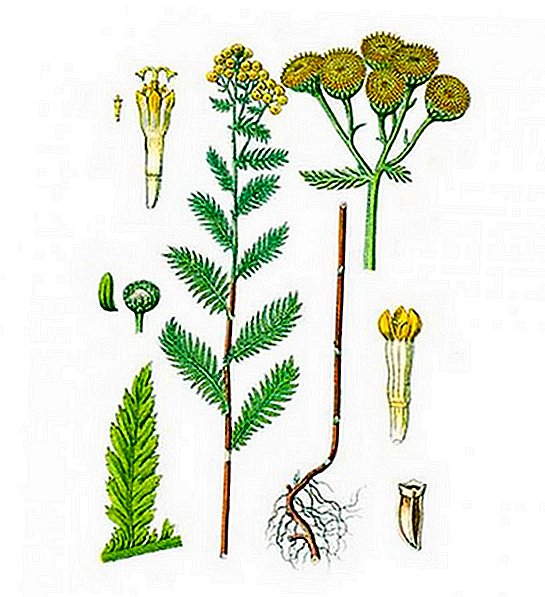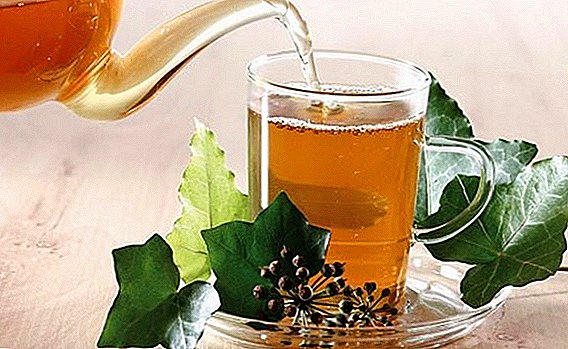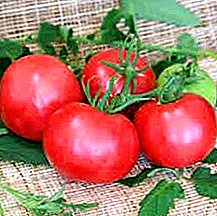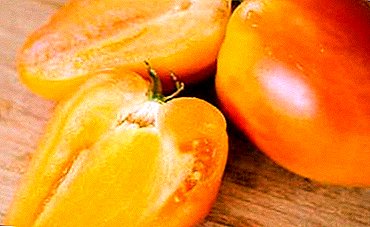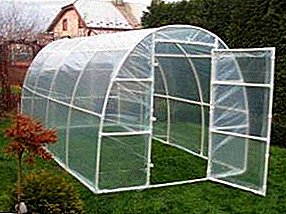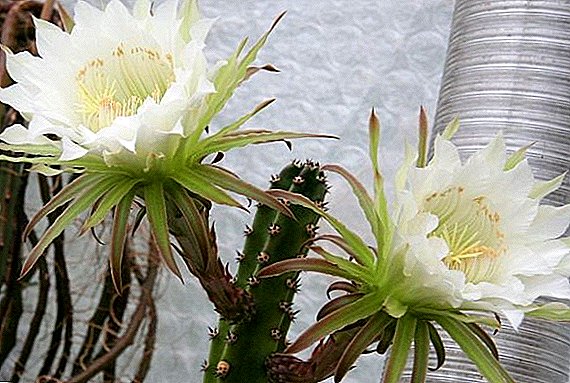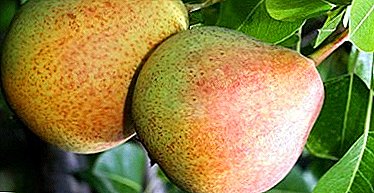
Variety pear Decabrinka refers to high-yielding varieties. Fruits of medium size, in weight reach from 100 to 120 grams.
This species has a high rate. frost resistance. Great for landing in Siberia.
What kind is it?
 Decarry refers to the autumn varieties of pears. Differs in good preservation of fruits on trees without loss of taste. The main purpose is juice. Good fruit and fresh.
Decarry refers to the autumn varieties of pears. Differs in good preservation of fruits on trees without loss of taste. The main purpose is juice. Good fruit and fresh.
Sometimes applied conservation or technological processing. Fruits have high commercial quality.
Characteristic properties:
| Composition | amount |
|---|---|
| Sahara | from 9 to 9.6% |
| Titrated acids | from 0.6 to 0.62% |
| Dry soluble substances | from 15 to 15.6% |
| Ascorbic acid | from 8 to 8.7 mg per 100 g |
By the autumn varieties also belong: Perun, Memory Zhegalov, Noyabrskaya, Otradnenskaya and Thumbelina.
Breeding history and breeding region
Variety bred in Scientific Organization of Agricultural Science FSBNU YUNIISK. Obtained by hybridization of seedlings 41-16-1 with No. 143.
 Originators: Falkenberg Eriht Alexandrovich, Mazunin Mikhail Aleksandrovich, L.I. Bolotova.
Originators: Falkenberg Eriht Alexandrovich, Mazunin Mikhail Aleksandrovich, L.I. Bolotova.
He gained wide popularity in the Ural and West Siberian regions.
Pear tree can also be found in the central and southern regions of Russia, in Belarus, Ukraine, Moldova, Estonia.
In these regions, the Hera, Cathedral, Duchess, Bere Bosc and Tonkovetka pear varieties are excellent.
Description varieties pears "Dekabrinka"
Tree It has average height, height reaches 5 meters. Crown thickened, oval-round. Branches curved, asymmetrical. On the tree placed very rarely. From the trunk depart at a 90-degree right angle. The ends of the stems are turned to the top of the tree.
Bark on skeletal stems and tree trunk smooth, silvery shade. Fruiting occurs on the fruit twigs and spur. Shoots elongated, smooth, without pubescence, brown shade. Kidney leaning, oval-rounded, miniature.
Leaves have the oblong form and the equal, shining surface. The shade of emerald foliage. The ends of the leaves are long, pointed. Blade without serrations, with a solid edge, pointing upwards. Scape elongated, wide, without pubescence. Stipules have a lincento form.
Fruit average, in weight reach from 100 to 120 grams. They have a flat surface and a symmetrical classical shape in the form of a pear. At the time of harvest have an emerald hue.
 When ripe appears emerald-amber main color and surface shade in the form of a mild blush 1/4 of the fruit.
When ripe appears emerald-amber main color and surface shade in the form of a mild blush 1/4 of the fruit.
Subcutaneous Freckles countless On the fruits, they are perfectly noticeable and have a silvery shade.
Peduncle pears elongated, curved, thick. The funnel is small with weak orzhavlennost. Calyx half closed, non-falling.
The saucer is miniature. Podchashechnaya tube compressed, low. Heart oval-rounded, miniature. Seed chambers are of closed type.
Seeds large, oval, brown shade. The pulp is rough, snow-white with abundant juice. It has a faint pear flavor.
A photo
For more information and see the pears "Dekabrinka" in the photo below:




Specifications
Productivity is stable with good fruiting. Pears are tightly attached to the stalks, do not crumble.
The high-yielding varieties include pears Severyanka, Severyanka red-cheeked, Oryol Summer, Oryol beauty and Moscow early.
Ripening occurs in the second half of September. Skoroplodnost refers to the average type of maturation.
The best pollinators are the late flowering pears: Larinskaya (frost-resistant high-yielding) and Uralochka (late autumn common).
 Preserving pears in cellars or cold rooms varies from 30 to 100 days - until December.
Preserving pears in cellars or cold rooms varies from 30 to 100 days - until December.
The yield of seedlings begins for 7 years after landing cuttings. Dekabrinka is different late flowering period - in the second decade of June.
It has moderate drought tolerance. Winter hardiness pear at the highest level. Withstands harsh winters to minus 48 degrees Celsius.
At such a temperature, the freezing of young seedlings reaches a 2-point mark.
Breeding methods
Reproduction occurs on seedlings of the Ussuri tree. With this tree, Decakrinka grows together perfectly and gives first-class planting cuttings. The height of such a pear does not exceed 15 meters.
Growth area of the Ussuri tree Far East, China, the Korean Peninsula. Growth can be done on a flexible stock. Before grafting the plant crown is thinned.
On the southern side of the tree choose from 2 to 4 stems 25 centimeters wide. At a height of 40 centimeters from the ground make a graft cutting.
For this fit budding in the side cut of the tree or in the bark of the trunk. The procedure itself is carried out in early May.
Diseases and pests
Variety has excellent pest resistance - gall mite (microscopic insect disrupting the process of plant photosynthesis); and the disease //selo.guru/ptitsa/bolezni-p/gribkovye/parsha.html (a dangerous disease caused by pathogenic fungi).
Chizhovskaya, Victoria, Marble, Lira and Kupava are resistant to certain diseases.
Powdery mildew, cytosporosis and rust were not observed. Pear tree Decakrinka resistant to a bacterial burn. These trees do not require mandatory preventive treatments.
 Conclusion. DeQarinka has a stable yield with an excellent indicator of fruiting. Fruits have high commercial quality.
Conclusion. DeQarinka has a stable yield with an excellent indicator of fruiting. Fruits have high commercial quality.
Preservation of pears in cellars or cold rooms varies from 30 to 100 days - until December, whence the name - "Decakrinka".
It reproduces on seedlings of the Ussuri tree. It has excellent resistance to pests and fungal diseases.


